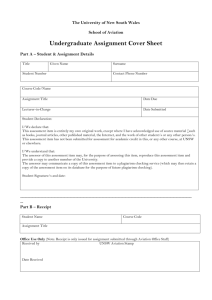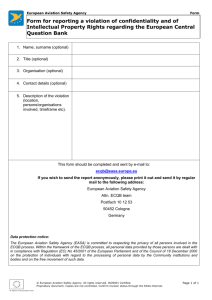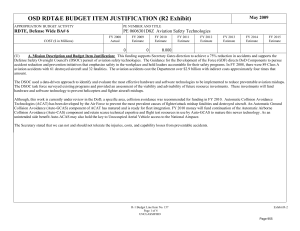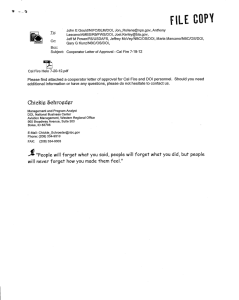The Successful Aviation Professional
advertisement
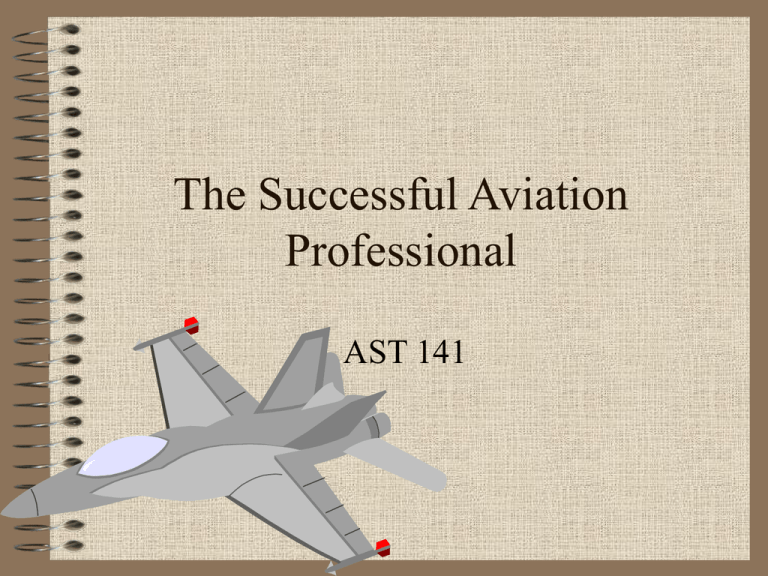
The Successful Aviation Professional AST 141 Professionalism • • • • • • Positive, courteous attitude Punctuality Appearance Good follow-through Concern for other than self Knowledgeable Disciplined • • • • Staying Power- Determination Focus- Goal oriented Organized daily routine Remember the 5 P’s- Proper Planning Prevents Poor Performance Integrity • Do what’s right even when no one’s watching • “If you Don’t have your integrity you don’t have much worth having” Good Moral Character • • • • • Be willing to accept personal responsibility Don’t bow to peer pressure Alcohol/Drugs can ruin an aviation career One of the requirements for an ATP Have a degree of humility- No matter what you’ve done, someone’s done it betterbeing cocky will kill you in aviation Human Factors An early start Accidents • 75% of General aviation accidents are directly or indirectly caused by the pilotmost occur during takeoff and landing • Accidents don’t just happen, they have a chain of events- however subtle • If you learn to recognize it early on, you can break it. Notable crew caused accidents • United 173- Portland, DC-8- ran out of fuel while trying to fix landing gear • Eastern Airlines L-1011, 1972- flew into ground under same circumstances • Pan-AM, KLM 747 collision on runwaydeadliest aviation accident ever • Air Florida Flight 90- icing • Examples in General Aviation are too numerous to mention. Aeronautical Decision Making • Crew Resource Management- Using all available resources to solve a problem • Factors which affect aeronautical decision making- PIC responsibility, communication, workload management, resource use, and situational awareness. PIC responsiblity • Fit to Fly?- level of stress, general health,knowledge & skill, recency of experience, attitude propensity (?) • PIC responsibility concepts: • Self assessment • Hazardous Attitudes (next) • Interpersonal relationships 5 Hazardous attitudes that can kill in an airplane • • • • • Anti-authority- Don’t tell me! Impulsivity- Just do it! Invulnerability- It’ll never happen to me! Macho- Watch this! Resignation- That’s life! Communication • Effective Listening • Barriers to Communication • Verbal and Non-verbal communication Resource Use • Resource Recognition • Internal resources- handbooks, checklists, CFI, another pilot, passengers, charts • External resources- controllers, ground personnel, FSS Workload Management • Planning- to prevent overload to include delegation • Prioritize- Learn to do • Overload- Learn to recognize Situational Awareness • Operational Conditions- status of aircraft, your own ability • Environmental Conditions- traffic, terrain, weather, interpersonal • Recognize obstacles to SA- Stress, sickness, distractions, fatigue Barnhart’s Aviation AXIOMS: Remember! • 5 P’s • 3 useless things to a pilot- runway behind you, altitude above you, air in the tanks • Learn from the mistakes of others, you won’t live long enough to make them all yourself. • Aviate, Navigate, Communicate- in that order • Keep looking around there’s always something you’ve missed. Axioms ctn. • The only time you have too much fuel is when you’re on fire. • Never let your aircraft take you somewhere your brain didn’t get 5 minutes earlier • It’s always better to be down here wishing you were up there than up there wishing you were down here • Think! Every takeoff is optional every landing is mandatory • There are 3 rules for making good landings– unfortunately nobody knows what they are.




